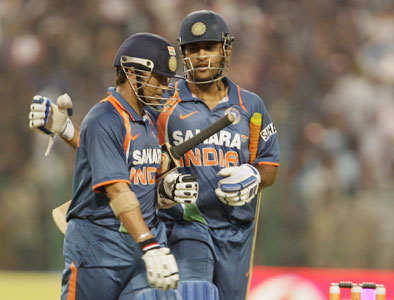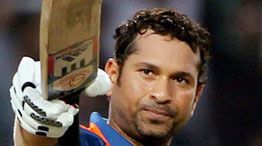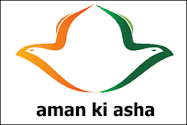Jerez de la Frontera, Spain
I've encountered some pretty courageous people in my time. I once shook John Glenn's hand. I've seen Pierce Brosnan sing in public. But the bravest guy I've met lately is Pierre-Henri Raphanel, the pilote officiel for the Molsheim, France-based car maker Bugatti. It was Mr. Raphanel who, in July, strapped himself into the new Veyron 16.4 Super Sport and circuited Volkswagen's Ehra-Lessien test track at an astonishing 268 mph, setting a new Guinness land-speed record for a production car.
"Eet was weally stress-phol," said the 49-year-old French former race champion, whose accent sounds like it came out of a perfume bottle. "I was a leetle bit scared." Quelle surprise. The biggest threat was that the huge Michelin tires might literally disintegrate due to the friction.
The slightest imperfection of machining in the gearbox's componentry, fashioned months before, might have been lying in wait, ready to explode like Apollo 13's oxygen tanks. Any sort of computer hiccup in the fuel-delivery system—pumping 10 liters per minute into the quad-turbo, 8-liter, 16-cylinder, 1,200-horsepower reactor behind the seats—could have upset the car's aero balance, sending it careering across the track like an arrow that's lost its fletching.
Crosswinds, birds, brakes and, yes, even driver error—all could have ended the interesting life of Pierre-Henri Raphanel. This was automotive marketing as death sport.
But Mr. Raphanel's greater feat of fortitude now lies ahead. It's his job to take customers on demonstration drives in the Super Sport, an extreme-performance version of the Bugatti Veyron, and sit in the passenger seat while mere civilians like myself drive this exquisite, barbaric, incomparable automobile at speeds faster than a Formula 1 car. The Super Sport can accelerate from highway speeds to more than 200 mph in the time it takes you to read this sentence out loud. Literally.
And then, just when other hypercars—Lambos, Ferraris, Paganis and even rarer isotopes—run out of steam, the Super Sport accelerates harder. This experience quickly exhausts one's supply of Old Norse oaths and curses and one is reduced to childish wows and holy cows. At full throttle in the Super Sport, the world comes at you in one ferocious, howling, soul-shaking, Newtonian sneeze.
And Mr. Raphanel must sit there, politely, impassively, encouragingly. Ladies and gentlemen, that takes balles.
Powertrain: Quad turbocharged and intercooled 8.0-liter, 16-cylinder engine with variable valve timing; seven-speed dual-clutch automated manual transmission; all-wheel drive with limited-slip rear differential.
Horsepower/torque: 1,200 hp at 6,400 rpm/1,106 pound-feet
at 3,000-5,000
Length/weight: 175.6 inches/106.7 inches
Curb weight: 4,043.6 pounds
0-62 mph: 2.5 seconds
0-186 mph: 14.6 seconds
Top speed: 268 mph
EPA fuel economy:
9/11 mpg, city/highway (est.)
Cargo space: < 3 cubic feet (est.)
A little back story: Bugatti, the legendary marque of European race and road cars run by Ettore and Jean Bugatti, père et fils, effectively ended the day in 1939 when Jean crashed the Le Mans-winning T 57C "Tank" on a country road outside Molsheim. According to company lore, the accident occurred when Jean tried to avoid a drunken letter-carrier on a bicycle, which gives you some idea of the esteem in which France holds the civil service.
In the late 1990s, VW's imperious leader, Ferdinand Piech, set about to recreate Bugatti, more or less out of thin air. The company restored Bugatti's lovely château and orangerie in Molsheim (in Alsace) and tore down and rebuilt the stables and garages, historically accurate down to the last brick and board.
The business plan, if you can call it that, was to construct 300 cars called the Bugatti Veyron 16.4. The 1,001-hp Veyron (around $1.6 million) was to be the fastest production car on Earth, with a top speed of 253 mph. When I drove the car in Sicily in 2005 I figured, well, that was that. The economics of beating such a record were decidedly not in any company's financial interest. It's estimated VW Group has invested about a half-billion euros in Bugatti.
But then an outfit in Washington state named Shelby Supercars—no relation to the famous race driver—managed to convince the Guinness records folks that its raw-as-tartare, twin-turbo, 1,200-plus-hp Ultimate Aero SSC was a production car meant for real consumers, and in October 2007, with a run of 257 mph, it pilfered the world record from Bugatti.
The disdain coming from Molsheim was as acrid as clutch smoke.
At the Super Sport introduction this week in Spain, company historian Julius Kruta denied that the Super Sport was built with the intention of taking back the land-speed record. The Ultimate Aero SSC "was not even on our radar." Right.
The Super Sport, said Mr. Kruta, was built in response to customers who, incredibly enough, asked for a sportier version of the Veyron—because, obviously, the Veyron was such a sissy cupcake of a car. The company plans to build 30 to 40 Super Sports and sell them for $2.5 million to $3 million. Operators are standing by.
The list of modifications to the Veyron is long and expensive. The car now has four fuel pumps, compared with the Veyron's two, feeding the larger quad turbochargers. A less restrictive (and louder) exhaust system was developed. That and some engine-management programming increases torque to a hilarious 1,500 Newton-meters (1,103 pound-feet), and peak torque is higher in the rev band. Suspension-wise, the ride height was raised slightly (to accommodate greater high-speed downforce); and the air suspension, half-shafts, links and wheels were lightened, reinforced and laced tighter. The biggest changes were aerodynamic. The Veyron's lovely, roof-mounted air scoops are replaced with so-called NACA ducts. The main grille is larger, and the entire front of the car is more ventilated to provide cooling for brakes and the front Haldex differential. A wild double diffuser has been arranged in the rear.
The aesthetic result? The hackneyed comparison would be to say the Super Sport looks like some kind of space ship, but if extraterrestrials exist, I seriously doubt they are this cool.
At the same time, the Super Sport was obliged to retain all the drivability and refined splendor of the original Veyron, except faster. "This wasn't easy," said chief engineer Wolfgang Schreiber, and I bet it wasn't. Driven at normal, human-scaled speeds, the car is positively docile. The Super Sport's ligaments are little more concussive, yes, and the engine noise more pronounced. But the seven-speed dual-clutch transmission, the real heart of this car, slips between ratios as silkenly as a Lexus.
Still, I'm not sure what this car is. It's not a sports car, exactly, because despite the heroic use of carbon fiber everywhere, it weighs 4,043 pounds (110 pounds less than the Veyron). Also, it's all-wheel-drive, which means it's just about impossible to get it to rotate on the throttle, even with stability control turned off. Thanks to its enormous hydraulic rear wing, it summons up to 880 pounds of downforce, pressing the car down on its gigantic Michelin tires (14 inches wide on the rear). All of that makes the car majestically stable and locked down, with phenomenal amounts of cornering grip (1.4 g's). But it also means the car is about as flickable and tossable as an aircraft carrier.
The Super Sport is many things, but fun to drive is not among them, unless you are amused by shafts of mortality sifting through the clouds.
It's not a track car, either, because its weight and ferocious acceleration will inevitably overwhelm the brakes. Yes, the Super Sport did smash the BBC's "Top Gear" Dunsfold Aerodrome lap record, because it had to make only one lap (1:16:8 seconds, 2.2 seconds faster than a Ferrari Enzo). Even these audacious brakes (15.3-inch front rotors with eight-piston calipers) simply can't shed enough heat, corner to corner, lap to lap, to make the car effectively fast on the track.
The Super Sport isn't a grand touring car, either, since you can't get a thong and two sticks of gum in the cargo compartment under the hood. Also, because of some dispute with the supplier, the Veyron's navigation system is no more. Bugatti wants its customers to mount their TomToms on the dash, like it's a Hertz rental car.
So what is this car? Well, for one thing, it's a motivational tool, a performance piece, a tour de force from a company—VW Group—which means to overtake Toyota as the world's largest car maker.
But for me what it is is simply the fastest car I will ever drive. No more waiting. Superman is here.
I've encountered some pretty courageous people in my time. I once shook John Glenn's hand. I've seen Pierce Brosnan sing in public. But the bravest guy I've met lately is Pierre-Henri Raphanel, the pilote officiel for the Molsheim, France-based car maker Bugatti. It was Mr. Raphanel who, in July, strapped himself into the new Veyron 16.4 Super Sport and circuited Volkswagen's Ehra-Lessien test track at an astonishing 268 mph, setting a new Guinness land-speed record for a production car.
"Eet was weally stress-phol," said the 49-year-old French former race champion, whose accent sounds like it came out of a perfume bottle. "I was a leetle bit scared." Quelle surprise. The biggest threat was that the huge Michelin tires might literally disintegrate due to the friction.
The slightest imperfection of machining in the gearbox's componentry, fashioned months before, might have been lying in wait, ready to explode like Apollo 13's oxygen tanks. Any sort of computer hiccup in the fuel-delivery system—pumping 10 liters per minute into the quad-turbo, 8-liter, 16-cylinder, 1,200-horsepower reactor behind the seats—could have upset the car's aero balance, sending it careering across the track like an arrow that's lost its fletching.
Crosswinds, birds, brakes and, yes, even driver error—all could have ended the interesting life of Pierre-Henri Raphanel. This was automotive marketing as death sport.
But Mr. Raphanel's greater feat of fortitude now lies ahead. It's his job to take customers on demonstration drives in the Super Sport, an extreme-performance version of the Bugatti Veyron, and sit in the passenger seat while mere civilians like myself drive this exquisite, barbaric, incomparable automobile at speeds faster than a Formula 1 car. The Super Sport can accelerate from highway speeds to more than 200 mph in the time it takes you to read this sentence out loud. Literally.
And then, just when other hypercars—Lambos, Ferraris, Paganis and even rarer isotopes—run out of steam, the Super Sport accelerates harder. This experience quickly exhausts one's supply of Old Norse oaths and curses and one is reduced to childish wows and holy cows. At full throttle in the Super Sport, the world comes at you in one ferocious, howling, soul-shaking, Newtonian sneeze.
And Mr. Raphanel must sit there, politely, impassively, encouragingly. Ladies and gentlemen, that takes balles.
2011 Bugatti Veyron 16.4 Super Sport
Price as tested: $2.8 million (est.)Powertrain: Quad turbocharged and intercooled 8.0-liter, 16-cylinder engine with variable valve timing; seven-speed dual-clutch automated manual transmission; all-wheel drive with limited-slip rear differential.
Horsepower/torque: 1,200 hp at 6,400 rpm/1,106 pound-feet
at 3,000-5,000
Length/weight: 175.6 inches/106.7 inches
Curb weight: 4,043.6 pounds
0-62 mph: 2.5 seconds
0-186 mph: 14.6 seconds
Top speed: 268 mph
EPA fuel economy:
9/11 mpg, city/highway (est.)
Cargo space: < 3 cubic feet (est.)
In the late 1990s, VW's imperious leader, Ferdinand Piech, set about to recreate Bugatti, more or less out of thin air. The company restored Bugatti's lovely château and orangerie in Molsheim (in Alsace) and tore down and rebuilt the stables and garages, historically accurate down to the last brick and board.
The business plan, if you can call it that, was to construct 300 cars called the Bugatti Veyron 16.4. The 1,001-hp Veyron (around $1.6 million) was to be the fastest production car on Earth, with a top speed of 253 mph. When I drove the car in Sicily in 2005 I figured, well, that was that. The economics of beating such a record were decidedly not in any company's financial interest. It's estimated VW Group has invested about a half-billion euros in Bugatti.
But then an outfit in Washington state named Shelby Supercars—no relation to the famous race driver—managed to convince the Guinness records folks that its raw-as-tartare, twin-turbo, 1,200-plus-hp Ultimate Aero SSC was a production car meant for real consumers, and in October 2007, with a run of 257 mph, it pilfered the world record from Bugatti.
The disdain coming from Molsheim was as acrid as clutch smoke.
At the Super Sport introduction this week in Spain, company historian Julius Kruta denied that the Super Sport was built with the intention of taking back the land-speed record. The Ultimate Aero SSC "was not even on our radar." Right.
The Super Sport, said Mr. Kruta, was built in response to customers who, incredibly enough, asked for a sportier version of the Veyron—because, obviously, the Veyron was such a sissy cupcake of a car. The company plans to build 30 to 40 Super Sports and sell them for $2.5 million to $3 million. Operators are standing by.
The list of modifications to the Veyron is long and expensive. The car now has four fuel pumps, compared with the Veyron's two, feeding the larger quad turbochargers. A less restrictive (and louder) exhaust system was developed. That and some engine-management programming increases torque to a hilarious 1,500 Newton-meters (1,103 pound-feet), and peak torque is higher in the rev band. Suspension-wise, the ride height was raised slightly (to accommodate greater high-speed downforce); and the air suspension, half-shafts, links and wheels were lightened, reinforced and laced tighter. The biggest changes were aerodynamic. The Veyron's lovely, roof-mounted air scoops are replaced with so-called NACA ducts. The main grille is larger, and the entire front of the car is more ventilated to provide cooling for brakes and the front Haldex differential. A wild double diffuser has been arranged in the rear.
The aesthetic result? The hackneyed comparison would be to say the Super Sport looks like some kind of space ship, but if extraterrestrials exist, I seriously doubt they are this cool.
At the same time, the Super Sport was obliged to retain all the drivability and refined splendor of the original Veyron, except faster. "This wasn't easy," said chief engineer Wolfgang Schreiber, and I bet it wasn't. Driven at normal, human-scaled speeds, the car is positively docile. The Super Sport's ligaments are little more concussive, yes, and the engine noise more pronounced. But the seven-speed dual-clutch transmission, the real heart of this car, slips between ratios as silkenly as a Lexus.
Still, I'm not sure what this car is. It's not a sports car, exactly, because despite the heroic use of carbon fiber everywhere, it weighs 4,043 pounds (110 pounds less than the Veyron). Also, it's all-wheel-drive, which means it's just about impossible to get it to rotate on the throttle, even with stability control turned off. Thanks to its enormous hydraulic rear wing, it summons up to 880 pounds of downforce, pressing the car down on its gigantic Michelin tires (14 inches wide on the rear). All of that makes the car majestically stable and locked down, with phenomenal amounts of cornering grip (1.4 g's). But it also means the car is about as flickable and tossable as an aircraft carrier.
The Super Sport is many things, but fun to drive is not among them, unless you are amused by shafts of mortality sifting through the clouds.
It's not a track car, either, because its weight and ferocious acceleration will inevitably overwhelm the brakes. Yes, the Super Sport did smash the BBC's "Top Gear" Dunsfold Aerodrome lap record, because it had to make only one lap (1:16:8 seconds, 2.2 seconds faster than a Ferrari Enzo). Even these audacious brakes (15.3-inch front rotors with eight-piston calipers) simply can't shed enough heat, corner to corner, lap to lap, to make the car effectively fast on the track.
The Super Sport isn't a grand touring car, either, since you can't get a thong and two sticks of gum in the cargo compartment under the hood. Also, because of some dispute with the supplier, the Veyron's navigation system is no more. Bugatti wants its customers to mount their TomToms on the dash, like it's a Hertz rental car.
So what is this car? Well, for one thing, it's a motivational tool, a performance piece, a tour de force from a company—VW Group—which means to overtake Toyota as the world's largest car maker.
But for me what it is is simply the fastest car I will ever drive. No more waiting. Superman is here.
![[Car1]](http://si.wsj.net/public/resources/images/OD-AA945_Car1_F_20101006232039.jpg)

![[SB10001424052748704696304575538091134628272]](http://s.wsj.net/public/resources/images/OB-KJ413_bugatt_D_20101007132359.jpg)




















































